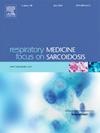12周沉浸式虚拟现实远程训练对囊性纤维化青少年功能能力的影响:一项随机对照、单(评估者)盲研究。
IF 3.1
3区 医学
Q2 CARDIAC & CARDIOVASCULAR SYSTEMS
引用次数: 0
摘要
背景:与同龄人相比,患有囊性纤维化(CF)的青少年的体育活动水平较低。交叉污染的风险限制了面对面体育活动的参与。远程锻炼(TE)是一种很好的远程锻炼方式,没有感染的风险。沉浸式虚拟现实(VR)可能是一种提高功能能力的激励方法。主要目的是评估为期12周的VR锻炼对6分钟步行距离(6MWD)的影响。次要目的是评估其对肺功能、肌肉力量、生活质量、可行性和乐趣的影响。方法:在这项随机对照研究中,临床稳定的参与者年龄在12至18岁之间,并随机分为基于vr的远程运动(VR-TE)组或TE组。每组6人,每组30分钟,每周3天,连续12周。结局指标为6MWD、FEV1、握力、肩屈膝伸肌力、囊性纤维化问卷修订(CFQ-R)、体育活动享受量表和系统可用性量表。结果:21名参与者完成了研究。两组间基线肺功能测试、6MWD、肌力和CFQ-R评分相似。VR-TE组训练后6MWD显著高于训练前6MWD (z=-2.93, p=0.003)。然而,在肺功能、肌肉力量或生活质量方面没有观察到统计学上的改善。可行性、乐趣、依从性和不良反应在两组之间相似。结论:虚拟现实和远程运动是促进青少年CF患者参与运动和改善功能能力的可行和激励方法,可能需要更长的vr运动时间来提高肌肉力量和生活质量。临床试验注册号:NCT05850351。本文章由计算机程序翻译,如有差异,请以英文原文为准。
The effect of a 12-week tele-exercise using immersive virtual reality on functional capacity in adolescents with cystic fibrosis: A randomized controlled, single (assessor) - blind study
Background
Adolescents with cystic fibrosis (CF) have lower levels of physical activity compared to their peers. Risk of cross-contamination limits participation in face-to-face sport activities. Tele-exercise (TE) is a good alternative to deliver exercise remotely, without risk of infection. Immersive virtual reality (VR) could be a motivating method to improve the functional capacity. The primary aim was to evaluate the effect of a 12-week VR exercises on 6-min walk distance (6MWD). The secondary aims were to assess its effects on pulmonary function, muscle strength, quality of life, feasibility, and enjoyment.
Methods
In this randomized controlled study, clinically stable participants aged between 12 and 18 years were included and randomized to a VR-based tele-exercise (VR-TE) or a TE group. Exercises were conducted in groups of 6 participants for 30 min, 3 days/week for 12 weeks in both groups. Outcome measures were 6MWD, FEV1, hand grip, shoulder flexor and knee extensor muscle strength, Cystic Fibrosis Questionnaire Revised (CFQ-R), physical activity enjoyment scale and system usability scale.
Results
Twenty-one participants completed the study. Baseline pulmonary function tests, 6MWD, muscle strength, and CFQ-R scores were similar between groups. In the VR-TE group, post-training 6MWD was significantly higher than pre-training 6MWD (z = −2.93, p = 0.003). However, no statistical improvement was observed in pulmonary function, muscle strength, or quality of life. Feasibility, enjoyment, adherence, and adverse effects were similar between groups.
Conclusion
Virtual reality and tele-exercise are feasible and motivating methods to facilitate the participation in exercise and improve functional capacity in adolescents with CF. Longer duration of VR-based exercise might be needed to improve muscle strength and quality of life.
Clinical trials registration number
NCT05850351.
求助全文
通过发布文献求助,成功后即可免费获取论文全文。
去求助
来源期刊

Respiratory medicine
医学-呼吸系统
CiteScore
7.50
自引率
0.00%
发文量
199
审稿时长
38 days
期刊介绍:
Respiratory Medicine is an internationally-renowned journal devoted to the rapid publication of clinically-relevant respiratory medicine research. It combines cutting-edge original research with state-of-the-art reviews dealing with all aspects of respiratory diseases and therapeutic interventions. Topics include adult and paediatric medicine, epidemiology, immunology and cell biology, physiology, occupational disorders, and the role of allergens and pollutants.
Respiratory Medicine is increasingly the journal of choice for publication of phased trial work, commenting on effectiveness, dosage and methods of action.
 求助内容:
求助内容: 应助结果提醒方式:
应助结果提醒方式:


